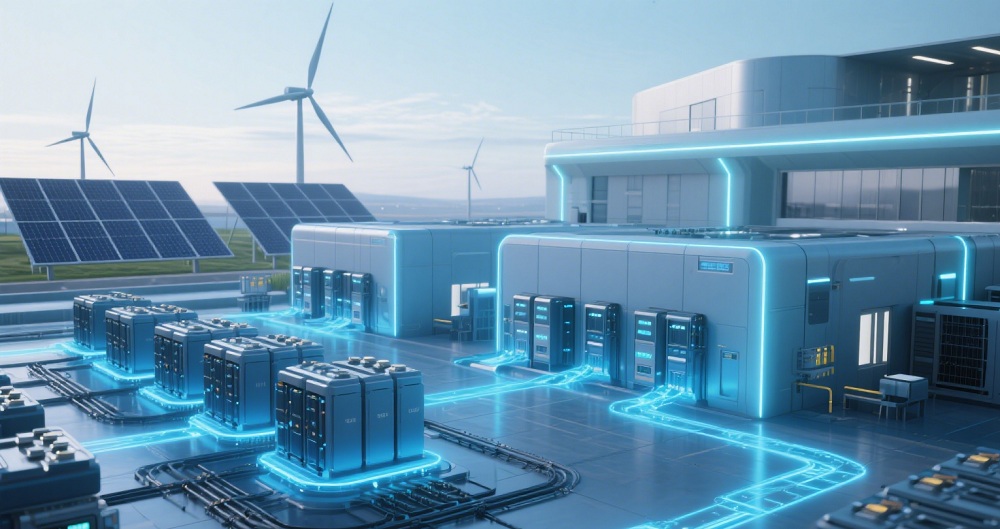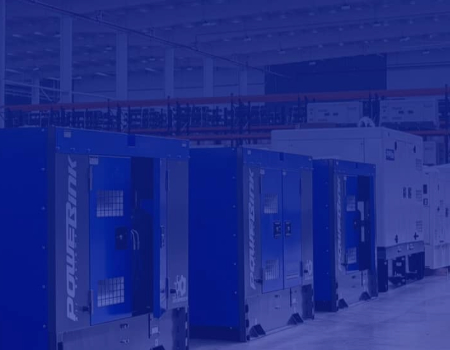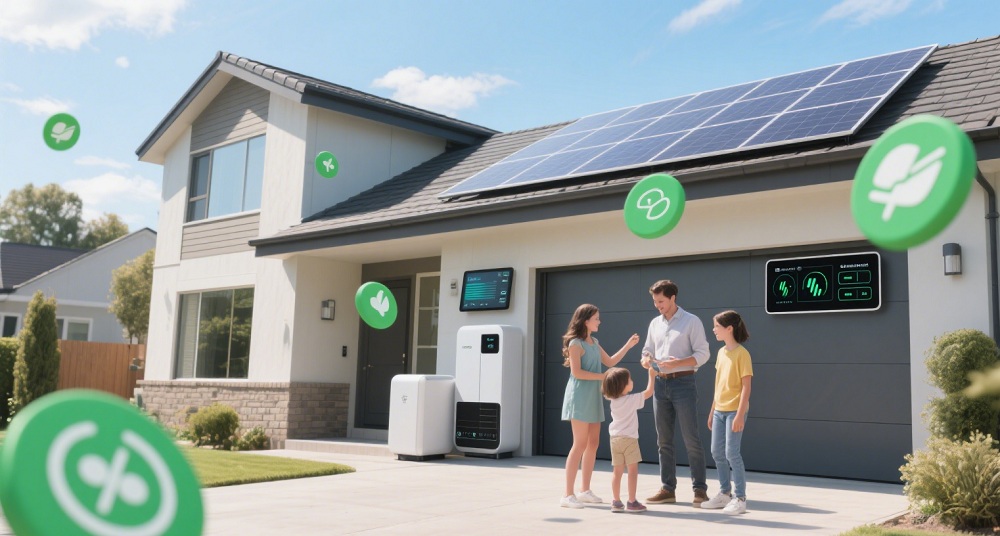Best Energy Storage Systems for Sustainable Power Solutions
Renewable energy growth worldwide is driving widespread adoption of efficient and dependable energy storage solutions for homes and businesses. As renewable energy sources like solar and wind become more widely adopted, the ability to store excess power for later use is essential for ensuring grid stability, cost savings, and energy independence.
The best energy storage systems not only improve the reliability of renewable energy but also help households, businesses, and industries transition toward greener and more sustainable power solutions.

What is a battery energy storage system?
A battery energy storage system (BESS) is a technology that allows energy to be stored and used at a later time. These systems capture electricity from renewable sources such as solar or wind and make it available when demand is higher or when generation is low.
By bridging the gap between production and consumption, they form the backbone of modern green power storage solutions. In short, they ensure that energy is available when you need it most, regardless of natural fluctuations in supply.
Battery chemistries and their characteristics
Different chemistries define the performance, safety, and suitability of a battery for specific applications. Lithium-ion batteries are among the best energy storage systems thanks to their high energy density, efficiency, and versatility. Lead-acid batteries, while older, remain cost-effective and reliable for certain grid applications.
Flow batteries, which use liquid electrolytes, are praised for their scalability and long cycle life, making them an excellent choice for what is helpful for long term energy storage. Each chemistry comes with trade-offs, balancing cost, safety, efficiency, and environmental impact.
Pros and cons of lithium-ion batteries
Lithium-ion batteries are widely recognized in solar storage solutions, providing high energy density, rapid charging, and broad availability. They are compact and versatile, suitable for homes, businesses, and large-scale utility installations.
Advantages of Lithium Ion Batteries
These batteries offer numerous advantages, such as efficient energy storage, long cycle life, and flexibility in application.
Challenges of Lithium Ion Batteries
However, they also come with challenges, including potential risks of overheating, higher costs compared to traditional batteries, and concerns over raw material sourcing. Despite these challenges, their benefits often surpass the drawbacks, making them a widely used choice among modern energy storage solutions.
Battery Types and Their Key Features
Familiarity with different battery types helps you choose an energy storage solution that fits your needs. The table below summarizes common battery technologies along with their advantages and challenges.
| Lithium-ion | High energy density, fast charging, long cycle life | Thermal runaway risk, higher cost, material sourcing concerns |
| Lead-acid | Cost-effective, reliable for grid use, mature technology | Low energy density, heavy, shorter cycle life |
| Sodium-based | Abundant materials, safer than lithium, scalable | Lower energy density, still under development |
| Flow batteries | Scalable, long cycle life, flexible operation | Complex system, higher upfront cost |
| Nickel-based | Stable, long cycle life, good energy density | Toxicity concerns, expensive, heavy |
| Hydrogen fuel cells | High energy density, zero emissions | Expensive, storage and transportation challenges |
| Zinc-air | High energy density, lightweight | Limited rechargeability, slower response |
| Supercapacitors | Rapid charge/discharge, very long life | Low energy density, high cost for large scale |
| Solid-state | Safer, potential for higher energy density | Emerging technology, high cost, production challenges |
This table illustrates the trade-offs between each battery type. When choosing an energy storage system, consider factors such as application, safety, energy density requirements, cost, and scalability.
Each battery type offers distinct advantages that make it suitable for specific uses, while the challenges must be managed to maximize performance and longevity.
What are the different types of energy storage?
Overview of Alternative Energy Storage Methods
Energy storage extends beyond traditional batteries and includes a variety of methods tailored to different energy needs.
Pumped Hydro Storage
Pumped hydro storage is a traditional energy storage method that uses water stored at a higher elevation to generate electricity when needed. Water is pumped uphill during low demand and released through turbines during high demand.
This technique supports long-duration, large-scale energy storage, helps balance the grid, complements variable renewable sources like wind and solar, and assists in regulating frequency and voltage.
Thermal Energy Storage
Thermal energy storage captures heat or cold for later use, offering a flexible solution for industrial processes and district heating systems. These systems can store excess thermal energy generated during low-demand periods and release it during peak demand, helping to reduce energy costs and improve efficiency.
Common storage mediums include molten salts, phase-change materials, and insulated water tanks, which retain energy for hours or even days. This approach not only enhances energy efficiency but also complements renewable energy sources by providing a reliable supply of heat or cooling when direct generation is unavailable.
Flywheels
Flywheels provide short-term energy storage with rapid response times, making them ideal for balancing transient loads. They store kinetic energy in a spinning rotor and release it quickly when needed, making them effective for stabilizing voltage fluctuations and providing backup power for seconds to minutes.
Compressed Air Energy Storage
Compressed air energy storage allows for long-duration, large-scale solutions suitable for grid support and renewable integration. It works by compressing air into underground caverns or tanks during periods of low demand and releasing it through turbines to generate electricity when demand rises. This system can store energy for hours or days and is useful for balancing intermittent renewable sources.
Role in Energy Stability
Both flywheels and compressed air systems contribute to maintaining energy supply balance, improving grid resilience, and supporting the integration of renewable energy sources. They provide complementary solutions for short-term and long-term storage needs, ensuring consistent and reliable power availability.
Solar Storage Solutions
Solar storage solutions are specifically designed to capture excess energy generated by solar panels during peak sunlight hours and store it for use when sunlight is unavailable.
These systems use batteries, often lithium-ion, to store energy efficiently, allowing homeowners and businesses to rely less on the grid and maximize the use of renewable power. By integrating solar storage solutions with smart energy management systems, users can optimize energy usage, reduce costs, and improve overall sustainability.
Safer lithium-ion battery storage methods
Safety is a key consideration in deploying lithium-ion batteries. Modern systems integrate multiple protective features, including advanced battery management systems (BMS) that monitor temperature, voltage, and charge levels. Proper housing, cooling systems, and fire suppression mechanisms further enhance safety. Key safety practices include:
- Monitoring temperature and voltage continuously
- Using proper housing and enclosures
- Installing cooling and ventilation systems
- Implementing fire suppression mechanisms
- Regular maintenance and monitoring protocols
With these measures in place, lithium-ion batteries remain efficient and safe for widespread adoption in both solar storage solutions and grid applications.
How does energy storage work?
Principle of Operation
The working principle of energy storage systems revolves around capturing excess electricity when production surpasses demand and releasing it when needed.
In solar storage solutions, this involves storing midday sunlight to be used during evening hours, while thermal energy storage may capture heat produced during the day for use at night to maintain consistent indoor temperatures. Other methods, such as flywheels or compressed air, store energy mechanically or as pressurized air for later use.
Energy Conversion and Storage
Energy storage systems operate by converting energy into a storable form, holding it safely, and then releasing it efficiently when required. This process ensures that energy supply aligns with demand, improves overall efficiency, and enhances the stability of the power grid.
Role in Renewable Integration
By maintaining reliable access to stored energy, these systems play a vital role in integrating renewable sources and supporting sustainable energy solutions.
What are the benefits of energy storage?
Energy storage solutions provide a range of benefits, including:
- Better integration of renewable energy, reducing reliance on fossil fuels
- Support for the transition to sustainable energy storage
- Improved grid stability and prevention of blackouts
- Greater energy independence for consumers
- Reduction of greenhouse gas emissions and promotion of a cleaner environment These advantages impact households, businesses, and large-scale industries alike, making reliable energy storage valuable across all sectors of society.
Can energy storage help me save on my energy bills?
Yes, energy storage systems can directly impact your electricity costs. By storing electricity when rates are low and using it during peak pricing hours, homeowners and businesses can cut expenses significantly.
Additionally, solar storage solutions empower households and businesses to utilize self-generated power, reduce reliance on the grid, and optimize energy consumption throughout the day.
Conclusion
Energy storage helps make renewable power more dependable and efficient. By combining different technologies, energy can be stored for both immediate and future use. Proper safety and management ensure reliable operation, allowing homes and businesses to lower costs and support a sustainable energy future.


